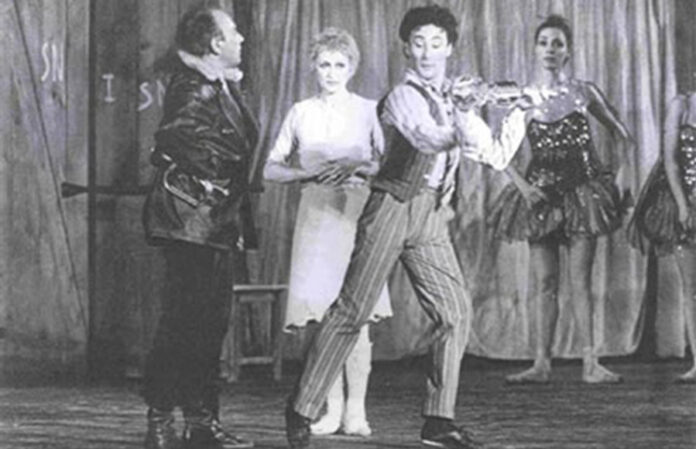Dance wants to move forward: while everybody still dancing on the web and on all home screens, the push to open the live activities in the ballrooms and theaters / festivals is on the horizon. In phase 1 and 2, the TV was responsible for seducing budding dancers to arouse the desire for dance in the students, both before and after the lockdown, that is, from June.
For this purpose Rai Storia presented a Sunday with Bolle, offering besides the prowess of today’s star a forgotten black and white film (1967), La strada by Mario Pistoni on music by Nino Rota, with Carla Fracci in the role of Gelsomina, still unrivaled sublime “natural” actress-dancer. Today the 83-year-old Milanese star says that you have to wait patiently, that you don’t have to dance masked and at a distance.
The dancers of the Scala Theatre were photographed with masks in the subway holding on to the appropriate supports as if they were bars; Alessandra Ferri, for her part, pleaded to return to the ballroom, at the needed distances, to “no longer be forced to exercise by attaching to the houses’ sinks”. And the summer of the performing arts is well determined to take advantage of the outdoor spaces.
In July, the glorious Nervi Festival, the oldest in Italy, will bring into its park the Tokyo Ballet, Trockadero and Sergei Polunin. The Kilowatt festival in Sansepolcro will also take place in July, as Bolzano dance in a rethought format.
The Ravenna Festival will be re-scheduled during the summer in the Rocca Brancaleone and the Spoleto Festival will have its program concentrated in the August’s last weekend, between the square and the Roman theater. Torino Danza which is in collaboration with France will also take place in August.
Santarcangelo looks to the “fantastic future” in the Motus program, Drodesera renovates itself in the wide spaces of its former power plant; Armonie d’Arte in Calabria will use its archaeological spaces en plein air.
East West in Rovereto will be on stage in the first half of September.
It is clear that no one will have any news since the preparation of the planned creations remained on stand-by.
Meanwhile, the presence of dance remains beneficially pervasive, “home delivery” as never before. And, like the live one, it is multiform at best.
Will this remain even afterwards, live and on demand? It will undoubtedly be available on our screens with the best productions, those designed for the screen, while more experimental dances will always require live.
In view of the return to the scene what has been happening?
The Sacre du Printemps by Alain Platel, the event-version for hundreds of amateurs, which was created for the World Dance Day has been canceled. So that, the Steam Laundry, Piedmontese / European Choreographic Center, proposed a “serious”, coherent mix of videodance and dance, with artists from the Turin area, certainly not in the name of “fun”, which the government attributes to the social role of the artist and which contemporary dance rejects indignantly. Art, not fun, not sport.
Rai 5 aired a production of La Scala which was very mediated in its time, The other half of the sky, songs by Vasco Rossi, choreography by the American Martha Clark, (2012), wisely forgotten; The Mariinsky TV in St. Petersburg proposed a ballet-grand guignol, Yaroslavna / The Eclipse, directed by Valery Gergiev, choreographed by the young Vladimir Varnava, to forget.
On the net, everyone gives wings to inventiveness. The Scala dancer-choreographer Stefania Ballone collaborates with Yuval Avital, Israeli guitarist, composer and multimedia artist, who ties the contributions of 60 participants on her chant-mantra for the Human Signs series, global dance online, for voices, sounds and bodies.
South African dancer Angel Mafafo, Congolese performer Dorine Lubumash, who interacts with Mick Zeni and Antonella Albano also from La Scala are involved. Dancers from Aterballetto, the Opéra de Paris, the Kibbutz Dance Company, the Ballets de Monte-Carlo, the Ballet Nacional Sodre Uruguay, the Beijing Dance Company, and the Kor’sia group are also in the game.
The multimedia team behind the work is Anglo-Italian: Digital Media Technology Lab of the University of Birmingham and Monkeys VideoLab in Rome.








